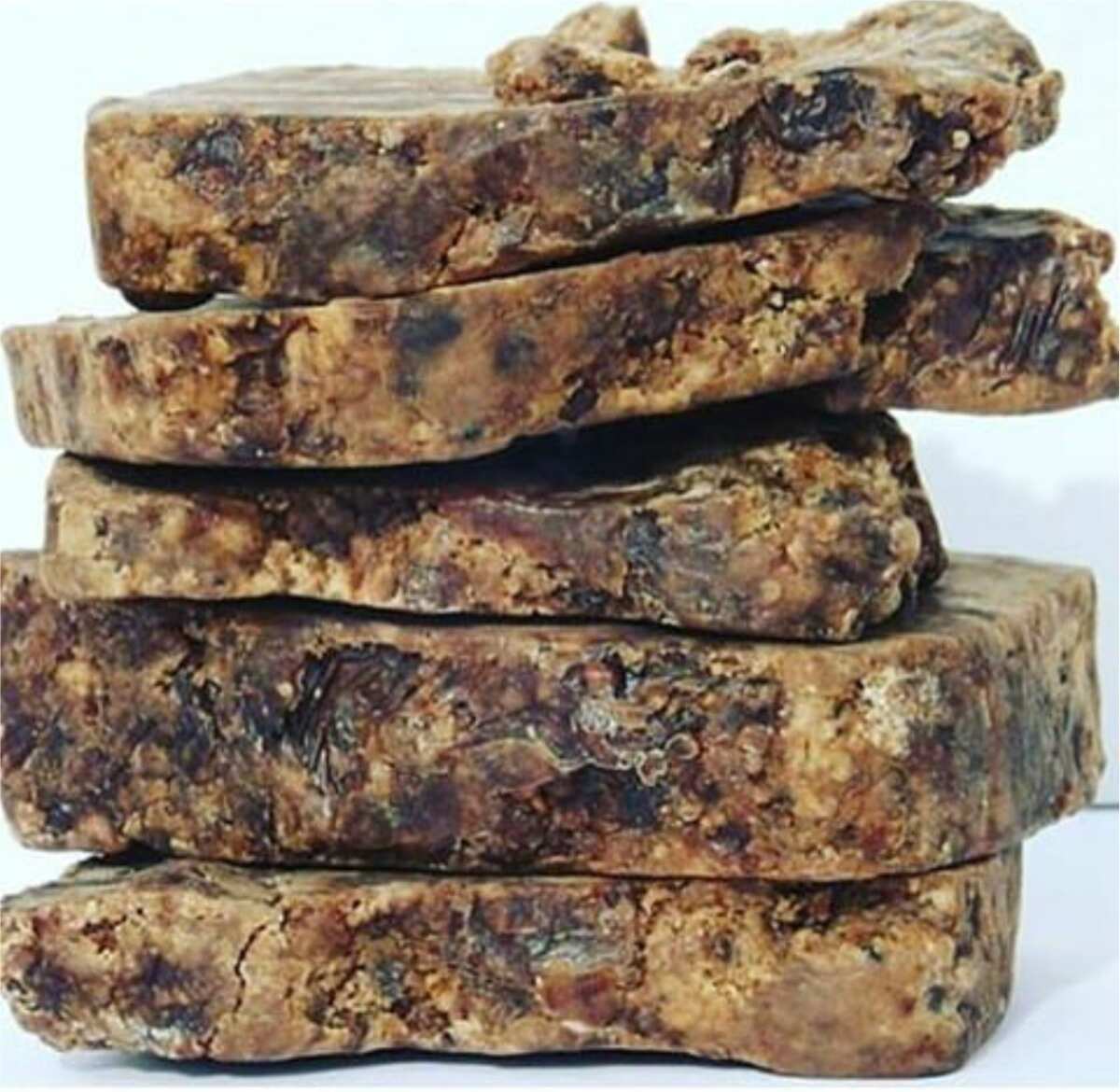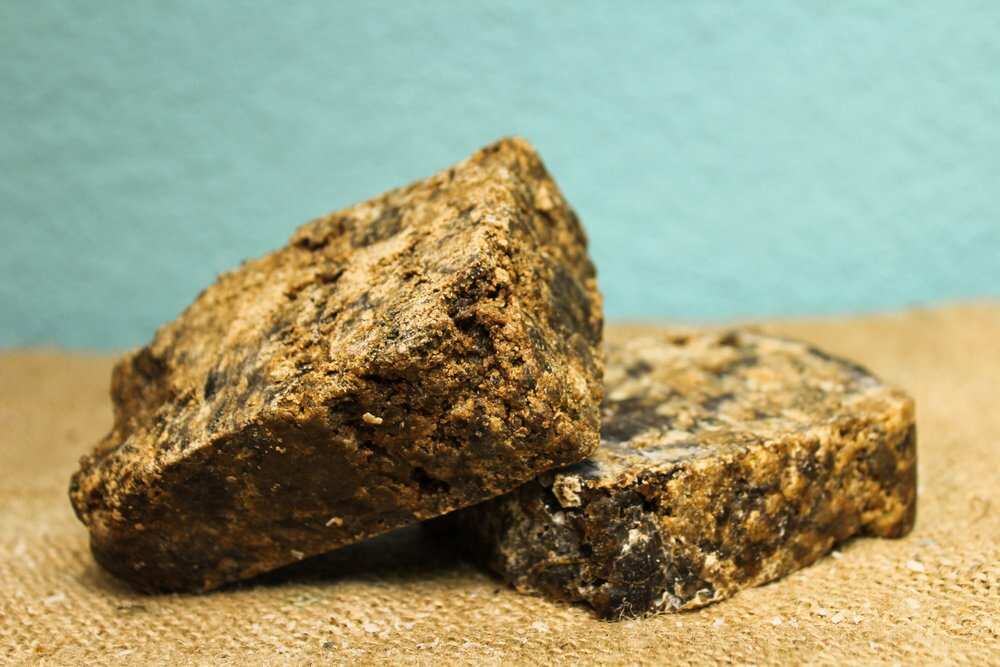African half-caste whitening black soap, also known by its numerous local names such as ncha nkota, sabulun salo, and ose dudu, is a soap of West African origin. It is primarily made from the ash of various African plants and dried banana peels, resulting in its characteristic dark colour. Contrary to what the name suggests, black soap is not actually black but a dark shade of brown. Since the product has recently become immensely popular, figuring out how to make whitening black soap can come in quite handy.

How do you make homemade whitening soap? The process and ingredients used to make black soap vary from one country to another. The most common ones are plantain skin ash, burnt cocoa pod ash, and kernel oil. Popular additives include camwood tree ash, lime, raw shea, and aloe vera.

Read also
How to cook yam porridge: the most delicious recipe you have ever had
How to make whitening black soap
Here is how to make organic lightening soap in Nigeria.
Recipe 1

PAY ATTENTION: Follow us on Instagram - get the most important news directly in your favourite app!
Here are the equipment and ingredients for 7 days whitening black soap.
- 1 tbsp of coconut oil
- 1 tbsp of powdered sandalwood
- 2 tbsp of powdered milk
- 2 tbsp of powdered oatmeal
- 2 tbsp of shea butter
- Eight banana peels
- 2 tbsp of turmeric powder
- 4 tbsp of raw honey
- 5 tbsp of powdered orange peel
- 50ml of fresh lemon juice
- Lukewarm rice water
Equipment
- Mortar and pestle
- Measuring scales and a measuring spoon
- Several bowls
Procedure
Here is how to make half caste whitening black soap at home.

Read also
Activated carbon face mask: a step-by-step recipe
Recipe 2
Here is another recipe you can use to make whitening black soap.
Homemade extra whitening soap ingredients
Here is a quick look at the ingredients.
- Ripe banana peels or 1 cup of camwood ash
- 2 cups of water
- 1 cup of shea butter
- 1 cup of olive oil
- 1 cup of coconut oil
- ½ cup of sunflower oil
- I cup avocado oil
Procedure
Once you have the ingredients for whitening black soap ready, follow the steps below.

Read also
The best edikaikong soup recipe to taste!
Where did African black soap originate?
While the specific country of origin is not well known, African black soap originated in one of the Western countries. Today, it is widely produced in Ghana, Côte d'Ivoire, and Nigeria.
What are the advantages of black soap?
The soap has wide-ranging benefits. The most common are related to its soothing, moisturizing, and antifungal nature and the removal of dark spots, fine lines, and acne.
Is black soap scented?
The original recipes are unscented. Still, one might come across scented varieties, given how much production has evolved over the years.
On what skin types can black soap be used?

The soap can be used on all skin types since the original recipes only make use of natural ingredients.
Is black soap antibacterial?
Yes, the soap has antibacterial properties.
How do you use black soap on your face?
To use the soap on your face, begin by wetting your face and then using the soap to work a nice lather. Massage the lather onto your face for 90 seconds. You can use a facecloth for extra exfoliation. Rinse the face with cold water and apply moisturizer.

Read also
How to make black soap with turmeric from scratch
Is black soap commercially available?
Yes, the product is available in numerous retail and wholesale stores in many countries across the world.
What are the ingredients for making whitening black soap?
The ingredients used to make black soap vary from one country to another. The most common ones are plantain skin ash, burnt cocoa pod ash, and kernel oil. Popular additives include camwood ash, lime, raw shea, and aloe vera.
Figuring out how to make whitening black soap can be quite helpful, given the numerous benefits associated with the soap and how incredibly popular it has recently become. Luckily, making your own black soap at home is not too difficult, as outlined in this guide.
READ ALSO: How to reset GOtv after payment: 4 quick and easy ways and other details
Legit.ng recently published a guide on resetting one's GOtv after making a payment. A GOtv account will often have issues if a payment goes past the required date. This often means that one needs to reset their account to continue enjoying the services.
Luckily, there are numerous ways you can reset your GOtv account from the comfort of your home. Read on to find out more.
Source: Legit.ng
ncG1vNJzZmivp6x7rbHGoqtnppdkrrS3jKWcoKGkZLS2tcOeqmhpYWyDeIWYZp%2Bor12starAxKegp59dl7mir8pmqqiZoGK1sLnEaA%3D%3D